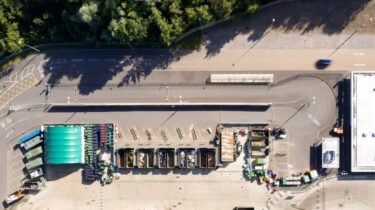Home – Solutions – Sustainable Products and Circularity – Waste Management for Sustainability
Sustainable Waste Management & Resource Recovery Solutions

Home – Solutions – Sustainable Products and Circularity – Waste Management for Sustainability

From operational and value chain waste analytics to waste market assessments, our commercial waste consulting services cover circular economy support, waste footprinting, and end-to-end assistance in waste reduction and diversion. We provide expertise in waste data, metrics, and reporting and strategies with roadmaps for resource efficiency.
Anthesis offers specialised commercial waste consulting services to support businesses in managing waste streams effectively and sustainably. Our services include waste footprinting, waste stream analysis, and regulatory compliance support, allowing companies to track, reduce, and optimise waste processes.
From data-driven waste management plans to end-to-end consulting on waste policies and reporting, we empower businesses to reduce costs, comply with environmental regulations, and position themselves as leaders in sustainable waste management. Whether you’re aiming for operational efficiency or striving to meet stringent compliance standards, our tailored approach provides the expertise needed for impactful waste solutions.
Our sustainable waste management services help organisations reduce their environmental footprint and align with circular economy principles. We provide comprehensive waste audits, customised reduction strategies, and resource efficiency plans to minimise waste generation across operations. By focusing on sustainable practices, we enable clients to achieve zero waste goals, optimise waste diversion, and enhance their overall sustainability performance.
Waste Baselining & Data Assessment – Assess current composition of waste streams and identify hotspots. Determine data available, create data management tools and protocols, set and monitor KPIs.
Expert Witness – Providing independent expert witness services concerning resource and waste management and regulation, compliance and environmental impact assessment, and due diligence.
Operational Waste Reduction & Diversion – Goals: Determine waste reduction goals and enablers through benchmarking and workshops. Create roadmaps to existing and future goals. Evaluate appropriate technology and partner options for waste diversion. Provide gap analysis and certification support for zero waste certifications.
Circularity of Products & Packaging – Facilitate deployment of recycling and other circular end of life technologies, programs, and infrastructure by identifying options for items to be reused or recycled. Evaluate appropriate partners and technologies.
Policy Analysis – Research and analyse relevant policies, creating a baseline report to identify impact on operations and policy gaps. Create strategies for proactively preparing for policy changes.
Market Assessment & Waste Commercial Due Diligence – Deliver market assessments for recycling and other waste technologies and infrastructure by assessing competitors and key players, waste generation, collection infrastructure, demand, and relevant regulations.
Scope 3 Analytics & Improvement Plans – Assess current composition of waste streams and identify hotspots. Determine data available, create data management tools and protocols, set and monitor KPIs.
With our expertise on specific waste streams we have created a centre of excellence for:
Food loss and waste reporting, food waste reduction planning, food waste valorisation.
WEEE collection programmes, WEEE takeback and repair/maintenance, WEEE product stewardship and compliance.
Packaging waste product stewardship and compliance, packaging waste reduction, reuse and recycling.
Apparel waste takeback for reuse and fibre recycling.
Critical raw materials waste management.
Our expert team works across sectors, creating tailored strategies that prioritise resource recovery and landfill diversion, helping clients meet regulatory compliance and sustainability targets.